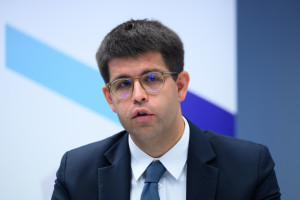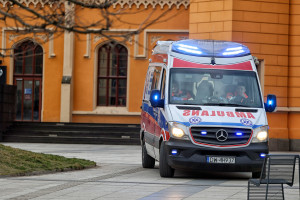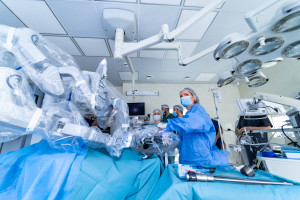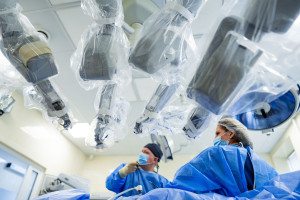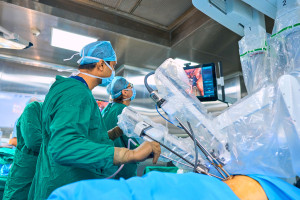Less money for the most popular robotic procedure. The storm is just beginning.

- AOTMiT has set a new price for radical prostatectomy procedures using a surgical robot – 14% lower
- Experts warn that this decision may reduce access to more modern methods and worsen the quality of treatment.
- The National Health Fund indicates that the number of robotic surgeries is becoming disproportionate to epidemiological data, and reimbursement costs have increased tenfold compared to forecasts from three years ago.
- Officials argue that the reduction is the result of calculations of actual costs, and not a deficit in the National Health Fund budget.
The number of robotic radical prostatectomy procedures is disproportionate to the epidemiological data on prostate cancer incidence, according to data from the National Health Fund . The reduced pricing for these procedures, developed by the Agency for Medical Technology and Tariff System, is intended not only to bring the rates paid by the Fund more realistic, but also—as we hear unofficially—"to rationalize the use of robots in the market."
As first announced by Rynek Zdrowia , the National Health Fund (NFZ) has reduced the price of robot-assisted prostatectomy by 14% (from PLN 32,700 to PLN 28,100 ). This brings the rate closer to that paid for laparoscopic surgery.
The urology community was in uproar. Professor Tomasz Szydełko, a national consultant in the field of urology, told the Sejm that the lower price "will lead to a reduction in the number of these procedures in favor of methods we consider inferior. In such cases, the risk of erectile dysfunction or urinary incontinence will be greater."
Magdalena Dzierwa , director of the AOTMiT's pricing department, explains that the pricing has been "realistically adjusted" to take into account the actual costs of providing the service, the widespread use of robots (which increases the ability to negotiate terms of use with distributors), and the use of devices in all three areas with separate pricing from the National Health Fund (NFZ): prostatectomy, colon cancer surgery, and endometrial surgery. According to Dzierwa, this reduces hospitals' fixed costs. Robots can also be used to perform a wider range of surgeries, although only up to the rates for conventional or laparoscopic procedures.
- Surgeons are also performing procedures better and better, so the duration of operations is shorter and the operating theater is optimally used - says Magdalena Dzierwa.
At the same time, the agency is reporting that it is currently working on issuing recommendations to the Ministry of Health regarding lung cancer surgery (the deadline for submitting the assessment is the end of July of this year) and kidney cancer surgery (in September 2025). It also wants to reassess rates for endometrial and colon cancer treatments, but needs to collect more data (as these procedures are still not very popular).
It may be significant that, as the AOTMiT (AOTMiT) pointed out, in the first quarter of 2025 , robotic surgeries led the way in terms of overperformance , accounting for 87% of the contracted value. This means that hospitals performed almost twice as many robotic surgeries as their contracts with the National Health Fund (NFZ) stipulated (the cost of overperformance alone for this period was nearly PLN 57.4 million).
"Benefits less spectacular than expected"Filip Nowak , president of the Fund, added to the discussion on robotics funding. At a media briefing on Monday (July 28), he said that the benefits of using modern devices in radical prostatectomy (where the most data is available) are proving less spectacular than the Fund had anticipated. Hence, as President Nowak indicated, caution is needed in activating this area.
The head of the National Health Fund (NFZ) emphasized that he is enthusiastic about new technologies in the healthcare sector, but they must benefit not only patients but also the system. Hospitals shouldn't buy robots just because they're "trendy." In practice, only 25 of the 45 healthcare providers performing robotic procedures perform at least 150 procedures per year —a figure the National Health Fund (NFZ) considers the minimum necessary to guarantee the profitability of the device.
Data confirming President Nowak's words was presented by Filip Urbański , director of the Department of Analysis, Quality Monitoring, and Service Optimization at the National Health Fund Headquarters. The data largely matched those that Rynek Zdrowia (Health Market) had previously revealed a month ago. But we learned even more about the cost-effectiveness of robotic prostatectomy.
The Fund carefully analyzed the demand for radical prostatectomy procedures, taking into account the incidence of prostate cancer and the decline in the number of surgeries during and immediately after the COVID-19 pandemic. It found that the incidence of this cancer was consistent with the GLOBOCAN database, but the number of robotic prostatectomy procedures had already exceeded the projected number of patients . Since the introduction of the National Health Fund's dedicated product for robotic prostatectomy, the number of surgeries has doubled. The commercial market for these procedures has virtually ceased to exist.
The National Health Fund (NFZ) acknowledges that robotic surgery offers significant benefits to patients compared to laparoscopy, significantly greater than the traditional method. Patients operated on with modern devices are less likely to be readmitted to the hospital, experience less blood loss, and experience fewer cases of permanent urinary incontinence (as previously reported in Rynek Zdrowia). No differences were noted in mortality or postoperative infections.
When it comes to the length of hospital stays, the matter is less clear. Statistically, patients undergoing robotic procedures are discharged earlier, but in many cases, the length of hospital stay depends primarily on the organizational structure of the facility.
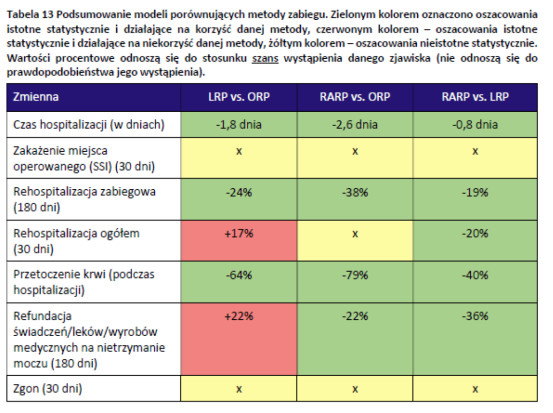
What hurts the National Health Fund most are the costs it incurs due to the significant increase in robotic prostatectomies. When preparing to introduce such a billing product in 2022, it was estimated that the Fund would cover a maximum of PLN 25 million, and robots would be present in just 14 centers. However, in 2024, 45 centers used such devices, and the reimbursement value for robotic prostatectomies reached PLN 272 million.
What's next? National Health Fund (NFZ) and AOTMiT (AOTMiT) officials argue that the reduced pricing for robotic prostatectomies isn't due to the Fund's tight budget, but rather to purely substantive reasons (actual costs and epidemiological data). It's possible that the costs of the procedures may be reduced in the near future – the NFZ is considering certain changes to its requirements, including the possible removal of the requirement for two experienced robotic operators to be present in the operating room.
Hospitals are also eagerly awaiting competition for the most popular robot. At the end of June, the mZdrowie portal reported that a distributor of a Chinese company had sold the first device manufactured by the Chinese company to a Polish hospital. It is said that serious competition could put pressure on the prices of surgical robots.
Write to the author: [email protected]
Copyrighted material - reprint rules are specified in the regulations .
rynekzdrowia

